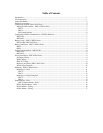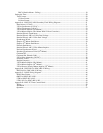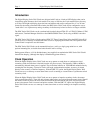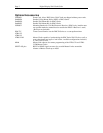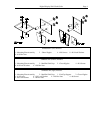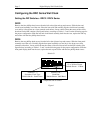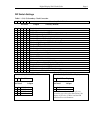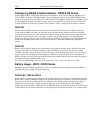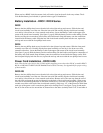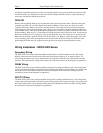
Page 1 Digital Display Wall Clock Guide
Introduction
The Digital Display Series Wall Clocks are designed with 2-inch or 4-inch red LED displays that can be
viewed from great distances; the 4-inch model as far away as 100 feet, the 2-inch model from as far away
as 50 feet. The bright red display shows the hour and minutes and can be configured for a 12 or 24 hour
format. By the setting of internal DIP switches, the DDC Series Wall Clocks can be configured to run as
"stand-alone" or to replace many analog secondary clocks that may be hard to find or no longer available.
The DDC Series Wall Clocks can be synchronized from the Lathem LTR4-512 or LTR8-512 Master, LTR0
mini:master, Terminal Manager Software or the OMNI:CHRON Time Clock, using an RS485 correction
signal.
The DDC Series Wall Clocks with the optional DDC-TC Timer Control Panel allow the DDC Series Wall
Clocks to act as a count up or count down timer as well as displaying the normal time. The optional Timer
Control Panel is required to use this feature.
The DDC Series Wall Clocks can be mounted directly to a wall, to a single gang outlet box or, with
optional mounting kits, as double-faced units from the wall or ceiling.
During power failures, a 9-Volt alkaline battery (not supplied) can maintain the DDC Series Wall Clock's
internal time keeping (although the display is blank during power failures).
Clock Operation
When the Digital Display Series Wall Clocks are set to operate as stand-alone or synchronous wired
secondary clocks, the time base is derived from the AC power source. The frequency (50Hz or 60Hz) is
automatically detected when power is applied. The clocks then initialize to 12:00AM and maintain time by
counting the line frequency. Corrective clocks will begin synchronization routines. Accuracy is related
directly to the accuracy of the line frequency. With the DDC-TC option, the Digital Display Series Wall
Clocks can act as a count up or count down timer as well as running as a stand-alone or synchronous wired
secondary clock.
When the Digital Display Series Wall Clocks are set to operate as impulse secondary clocks, the master
clock controls time totally. Time will only advance when pulses are received from the master clock. Should
the master clock lose power, the wall clocks would hold at the time that the last pulse was received until
power to the master clock is restored and pulses continue. With the DDC-TC option, the Digital Display
Series Wall Clocks can act as a count up or count down timer as well as running as an impulse secondary
clock.





